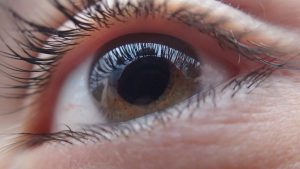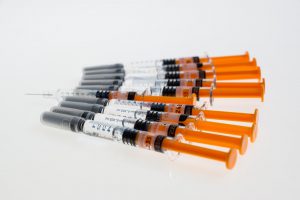If you had chicken pox when you were younger, then you are at a high risk of getting shingles when you are older. Shingles typically occur in people 50 and older, and can be extremely painful. New research shows that cases of blinding shingles have tripled since 2004. The virus remains dormant in your body, but it can be reactivated later in life, causing the shingles. These shingles can occur in the nerve of the eye, causing severe pain, blurry vision, and even blindness. The pain that comes from shingles can be unbearable, but there are ways that you can prevent shingles from occurring, and treatment to receive before it blinds you.
What Are Shingles?

Shingles is known as herpes zoster, or just “zoster virus.” It occurs when the virus in the nerve cells become active. It causes a skin rash, and even vision loss. The virus that causes shingles is the varicella-zoster virus, which is the same virus that causes chickenpox. If you had chickenpox, then you have the virus in your body forever. It can remain dormant for a long time, and usually occurs when you are older, and your immune system is weaker.
When the virus reactivates, it travels through nerves, and can cause a burning or tingling sensation. Two or three days later, when the virus reaches the skin, blisters will appear along the nerve. The skin is often very sensitive, and painful. Because the eye has “numerous highly sensitive nerves,” it’s particularly painful, Dr. Nakul Shekhawat, an ophthalmologist at the University of Michigan said, and a rash, swelling, inflammation and pink eye can go along with it. In some cases, corneal scarring and blistering can result in permanent vision loss.
Blinding shingles can kill the nerve endings, causing ulcers on the eye and inflammation inside the eye. It can cause glaucoma, and can damage the back of the eye.
Prevention
A two-dose vaccine called Shingrix, approved in 2017, can prevent 97% of shingles cases, and an older vaccine (Zostavax) can cut risk by half. The CDC’s Advisory Committee on Immunization Practices recommends that adults 50 and older who had chickenpox, get two doses of the shingles vaccine Shingrix (recombinant zoster vaccine), two

to six months apart. The vaccine cannot cure shingles, but it is a preventive measure to take before any problems begin from the shingles virus.
Treatment
Treatment can range from eye drops to compresses in manageable cases, then surgery in more advanced cases.
If issues begin with your eyes, you should see your doctor right away. “If you feel tingling, pain, burning and develop a rash on your scalp, forehead, eyelids or tip of your nose, it’s a warning sign,” Dr. Thomas Steinemann, an ophthalmologist in Cleveland and clinical spokesman for the American Academy of Ophthalmology says, “There’s a strong possibility that you will get it in your eye. The nerve endings there are the nerves that connect to the eye.” A lot of seniors had the chickenpox when they were younger because there was not a vaccine for it created yet. This virus remains dormant for a long time, and when it resurfaces, can cause painful shingles throughout your body, and vision loss. If you are able to, get the recommended vaccine to prevent shingles, or at least ease symptoms.
